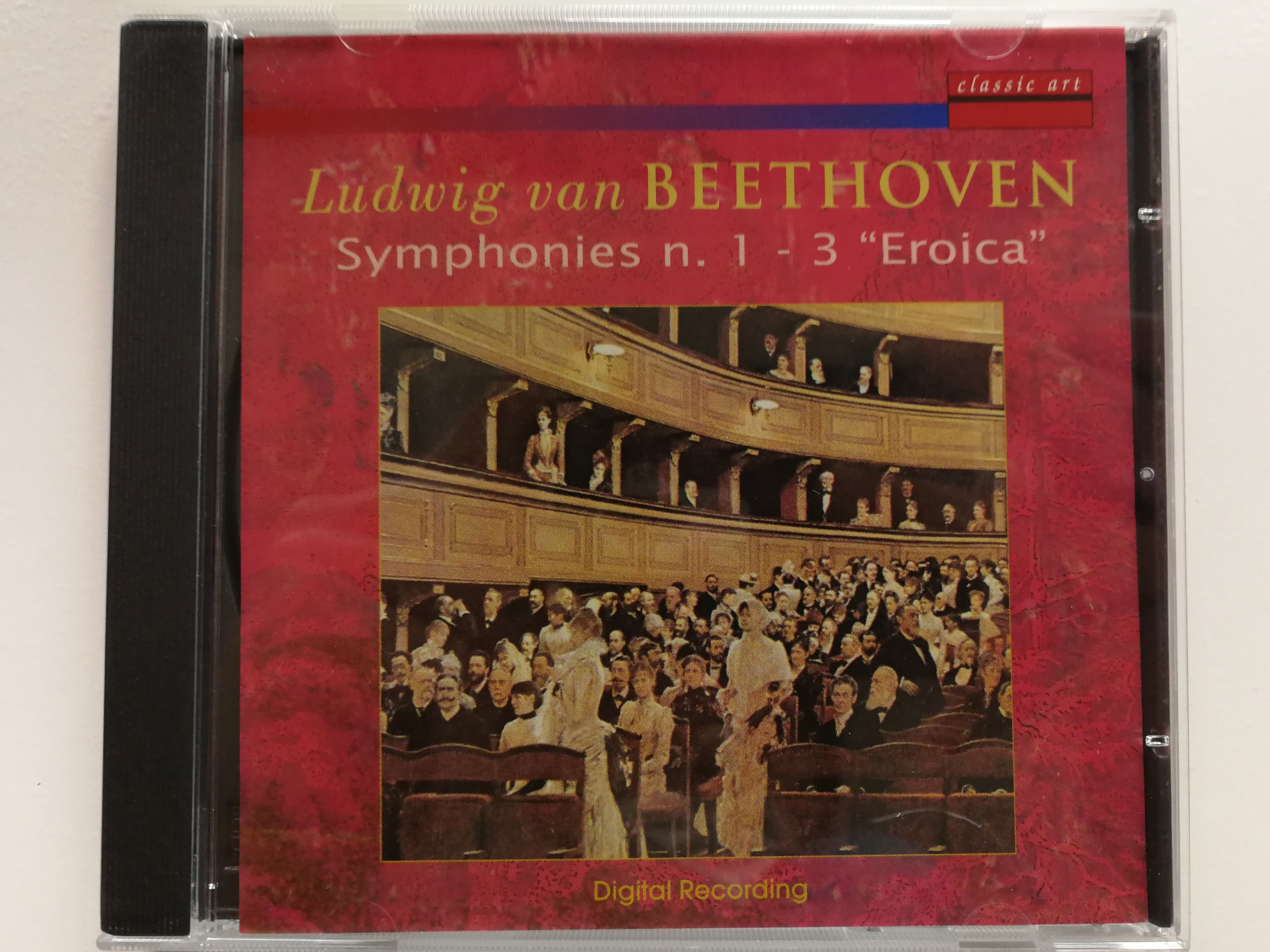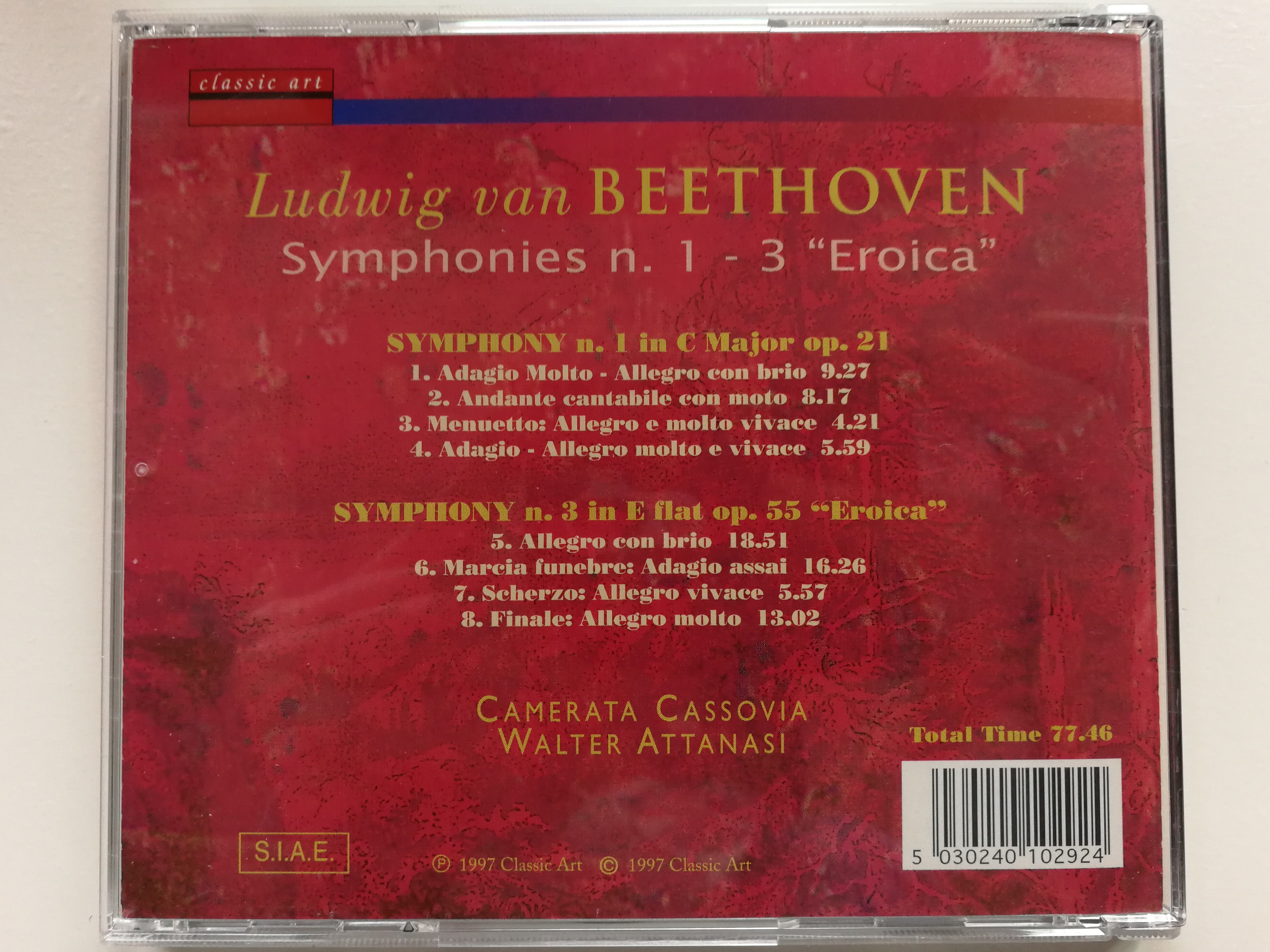Description
Ludwig van Beethoven Symphonies n. 1-3 "Eroica" / Camerata Cassovia - Conducted by Walter Attanasi / Classic Art Audio CD 1997
UPC 5030240102924
AUDIO CD
MADE IN EU
AUDIO: Stereo 2.0
SUBTITLES: -
Total Runtime: 77:46
English Summary:
Ludwig van Beethoven (/ˈlʊdvɪɡvænˈbeɪtoʊvən/ (![]() listen); German: [ˈluːtvɪç fan ˈbeːtʰoːfn̩] (
listen); German: [ˈluːtvɪç fan ˈbeːtʰoːfn̩] (![]() listen); baptised 17 December 1770 – 26 March 1827) was a German composer and pianist; his music is amongst the most performed of the classical music repertoire, and he is one of the most admired composers in the history of Western music. His works span the transition from the classical period to the romantic era in classical music. His career has conventionally been divided into early, middle, and late periods. The "early" period in which he forged his craft is typically seen to last until 1802. His "middle" period, sometimes characterised as "heroic", showing an individual development from the "classical" styles of Joseph Haydn and Wolfgang Amadeus Mozart, covers the years 1802 to 1812, during which he increasingly suffered from deafness. In the "late" period from 1812 to his death in 1827, he extended his innovations in musical form and expression.
listen); baptised 17 December 1770 – 26 March 1827) was a German composer and pianist; his music is amongst the most performed of the classical music repertoire, and he is one of the most admired composers in the history of Western music. His works span the transition from the classical period to the romantic era in classical music. His career has conventionally been divided into early, middle, and late periods. The "early" period in which he forged his craft is typically seen to last until 1802. His "middle" period, sometimes characterised as "heroic", showing an individual development from the "classical" styles of Joseph Haydn and Wolfgang Amadeus Mozart, covers the years 1802 to 1812, during which he increasingly suffered from deafness. In the "late" period from 1812 to his death in 1827, he extended his innovations in musical form and expression.
Artists & Performers:
Camerata Cassovia - conducted by Walter Attanasi
Tracklist:
CD 1
Symphony n 1 in C Major op. 21
1. Adagio molto - Allegro con brio
2. Andante cantabile con moto
3. Menuetto: Allegro e molto vivace
4. Adagio - Allegro molto e vivace
Symphony n. 3 in E-falt op. 55 "Eroica"
1. Allegro con brio
2. Marcia funebre: Adagio assai
3. Scherzo: Allegro vivace
4. Finale: Allegro molto
The Symphony No. 3 in E♭ major, Op. 55, (also Italian Sinfonia Eroica, Heroic Symphony) is a symphony in four movements by Ludwig van Beethoven. One of the composer's most celebrated works, the Eroica symphony is a large-scale composition that marked the beginning of Beethoven's creative middle period.
Composed mainly in 1803–1804, the work is grounded in the Classical symphonic tradition while also stretching boundaries of form, length, harmony, and perceived emotional and possibly cultural content. It has therefore widely been considered an important landmark in the transition between the Classical period and the Romantic era.























